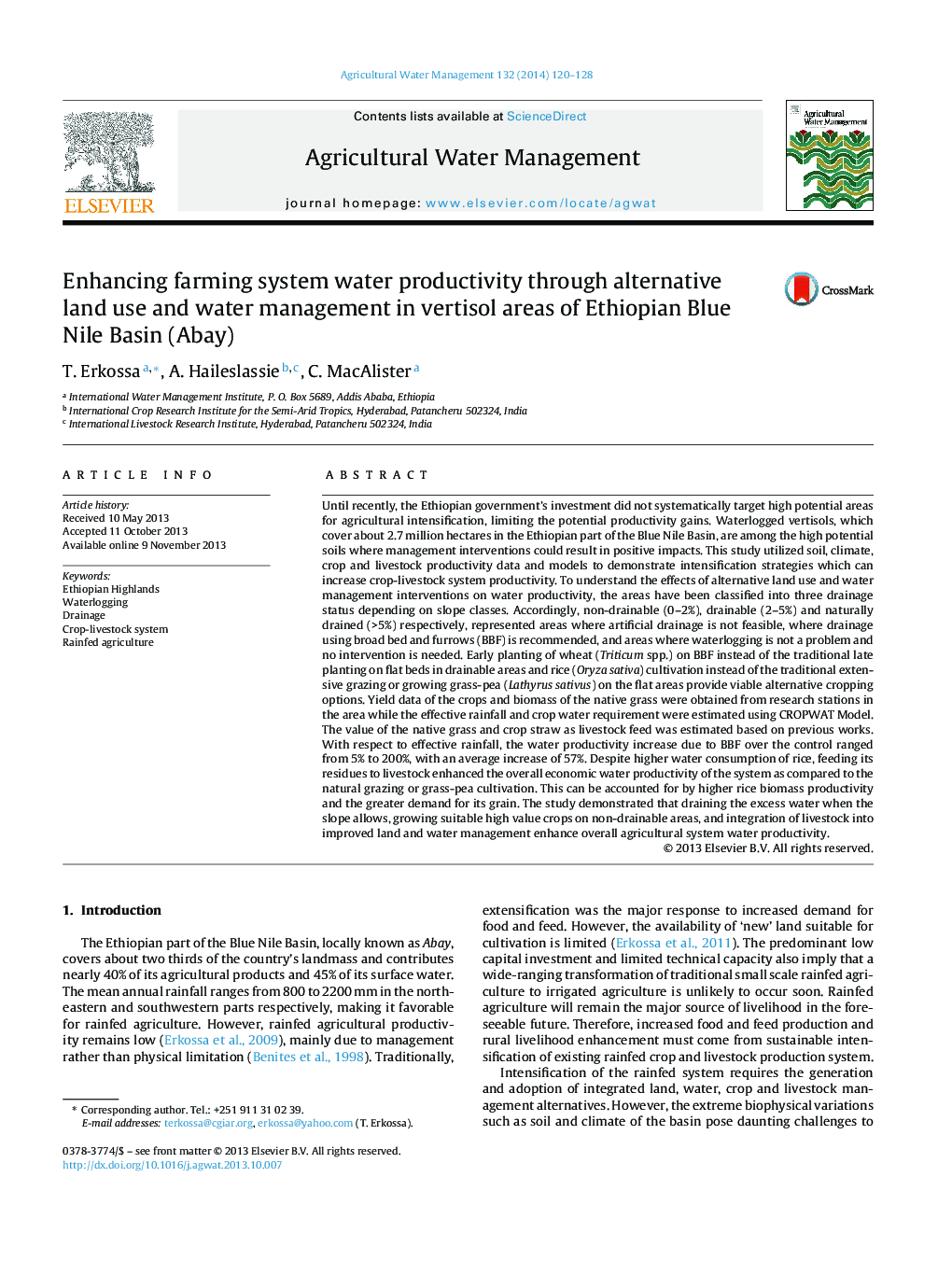| کد مقاله | کد نشریه | سال انتشار | مقاله انگلیسی | نسخه تمام متن |
|---|---|---|---|---|
| 4478787 | 1622947 | 2014 | 9 صفحه PDF | دانلود رایگان |
• Broad bed and furrows increased water productivity of wheat on sloping vertisols.
• Rice or grass-pea on waterlogged falt vertisols enhance crop water productivity.
• The use crop residues as livestock feed enhanced systems water productivity.
Until recently, the Ethiopian government's investment did not systematically target high potential areas for agricultural intensification, limiting the potential productivity gains. Waterlogged vertisols, which cover about 2.7 million hectares in the Ethiopian part of the Blue Nile Basin, are among the high potential soils where management interventions could result in positive impacts. This study utilized soil, climate, crop and livestock productivity data and models to demonstrate intensification strategies which can increase crop-livestock system productivity. To understand the effects of alternative land use and water management interventions on water productivity, the areas have been classified into three drainage status depending on slope classes. Accordingly, non-drainable (0–2%), drainable (2–5%) and naturally drained (>5%) respectively, represented areas where artificial drainage is not feasible, where drainage using broad bed and furrows (BBF) is recommended, and areas where waterlogging is not a problem and no intervention is needed. Early planting of wheat (Triticum spp.) on BBF instead of the traditional late planting on flat beds in drainable areas and rice (Oryza sativa) cultivation instead of the traditional extensive grazing or growing grass-pea (Lathyrus sativus) on the flat areas provide viable alternative cropping options. Yield data of the crops and biomass of the native grass were obtained from research stations in the area while the effective rainfall and crop water requirement were estimated using CROPWAT Model. The value of the native grass and crop straw as livestock feed was estimated based on previous works. With respect to effective rainfall, the water productivity increase due to BBF over the control ranged from 5% to 200%, with an average increase of 57%. Despite higher water consumption of rice, feeding its residues to livestock enhanced the overall economic water productivity of the system as compared to the natural grazing or grass-pea cultivation. This can be accounted for by higher rice biomass productivity and the greater demand for its grain. The study demonstrated that draining the excess water when the slope allows, growing suitable high value crops on non-drainable areas, and integration of livestock into improved land and water management enhance overall agricultural system water productivity.
Journal: Agricultural Water Management - Volume 132, 31 January 2014, Pages 120–128
